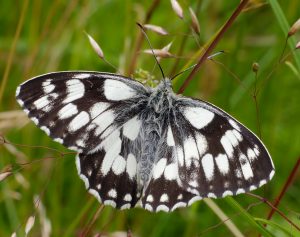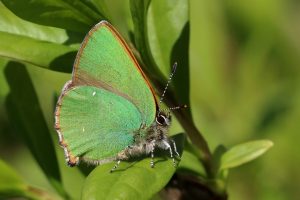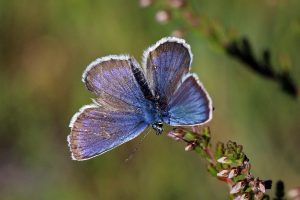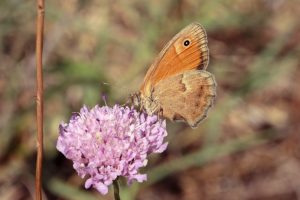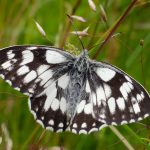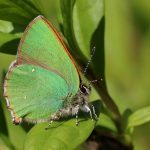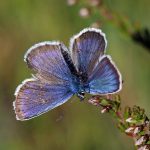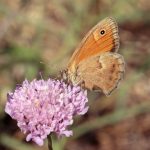Ditchling Common is a biological Site of Special Scientific Interest, noted for, among other things – the array of butterflies that make the site their home.
Here are just a few of the exciting and beautiful creatures to look out for as we get further into the year.
Marbled White (Melanargia galathea)
The Marbled White is a black and white checkerboard of a butterfly, with dramatic and distinctive markings. The caterpillars feed on grasses, and adults can be seen from mid-June to mid-September; they have a particular fondness for purple flowers such as thistles and knapweed.
Green Hairstreak (Callophrys rubi)
The Green Hairstreak has vivid and bright green wings with small white spots on the underwing. The caterpillars have a varied diet, and will feed on rock-rose, trefoil, gorse, broom, and bramble, depending on what is available. The adults can be observed between April and July.
Silver-Studded Blue (Plebejus argus)
The Silver-Studded Blue, though small, is extremely beautiful. It is a sexually dimorphic species, so it is only the males which sport the blue colouring; the females’ wings are a soft warm brown with a row of reddish spots on their hindwings. The caterpillars can be spotted feeding on heather and gorses from late March to early June.
Small Heath (Coenonympha pamphilus)
The Small Heath is relatively modest in appearance, with wings of a soft tawny orange colour. When at rest, it keeps its wings closed to reveal the eyespots on the tips of its underwings. The caterpillars, which feed on various grasses, are bright green with a subtle pale stripe along its side. This species does not have fixed breeding periods, and the adults can be seen from late April all the way through to September.


